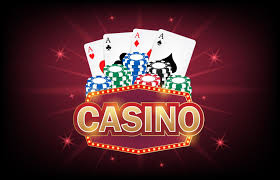Barbering is more than just a profession—it’s an art form steeped in tradition, culture, and community. For centuries, barbers have been trusted not only with grooming but also with fostering conversations and creating a sense of camaraderie. Today, the pengeluaran macau is experiencing a renaissance, merging old-world techniques with modern trends to meet the evolving tastes of clients around the globe.
A Rich Historical Legacy
Barbering has ancient roots, with practices that date back to civilizations like Egypt and Rome. In medieval Europe, barbers performed a variety of tasks beyond hair cutting, including minor surgeries and dental extractions—a legacy reflected in the classic red and white barber pole, symbolizing blood and bandages. As medical practices advanced, barbers honed their craft solely around grooming, gradually evolving into the specialists we know today.
The Barber as an Artist and Craftsman
Modern barbers are both artisans and craftsmen. Every haircut, shave, or beard trim is an opportunity to showcase creativity and precision. A skilled barber understands that hair is a canvas, and the tools of the trade—scissors, clippers, and razors—are instruments of transformation. This attention to detail not only creates a polished look but also boosts a client’s confidence.
Precision and Personalization
One of the key elements of barbering is the personalized service. Every face is unique, and an experienced barber takes the time to assess facial structure, hair type, and individual style preferences. Whether it’s a classic cut, a modern fade, or a meticulously styled beard, customization is at the heart of the experience.
The Ritual of Grooming
Visiting a barber is often more than a quick trim; it’s a ritual that encourages relaxation and conversation. The barbershop has historically served as a social hub, where stories are exchanged and community bonds are strengthened. In today’s fast-paced world, these moments of connection provide a welcome respite, emphasizing that grooming is as much about mental well-being as it is about physical appearance.
Embracing Modern Trends
The barbering industry has seen a significant resurgence in recent years, fueled by a growing appreciation for traditional skills and a renewed interest in men’s grooming. This modern revival is evident in the resurgence of the classic barbershop aesthetic—vintage chairs, exposed brick, and an atmosphere that nods to the past while embracing the future.
Integrating Technology
While the art of barbering remains rooted in tradition, many modern barbershops have embraced technology to enhance customer service. Online booking systems, social media engagement, and digital portfolios allow barbers to showcase their work, reach wider audiences, and maintain relationships with clients. This blend of old and new ensures that the craft remains relevant in a digital age.
Expanding Services
Today’s barbershops offer a range of services beyond the standard cut and shave. Many provide grooming consultations, skincare advice, and even spa-like treatments. This evolution reflects the growing demand for comprehensive self-care, where barbers are seen as trusted advisors in personal style and wellness.
The Community Connection
At its core, barbering is about building relationships. The intimate setting of a barbershop encourages dialogue, storytelling, and the exchange of ideas. For many, it’s a place where one can discuss everything from sports and local news to broader societal issues—all while enjoying a tailored grooming experience.
Beyond the Chair
Many barbers see their role as extending beyond hair and beard care. They become confidants, mentors, and community figures. By offering a space where clients feel valued and heard, barbers contribute significantly to local culture and community spirit.
Challenges and the Future
Like many traditional crafts, barbering faces challenges in an increasingly digital and fast-paced world. Competition from unisex salons and the casualization of grooming can sometimes dilute the specialized skills of professional barbers. However, the dedication to craftsmanship and the unique experience offered in a barbershop continue to set the trade apart.
Continuous Learning and Innovation
The most successful barbers are those who continuously refine their skills, learn new techniques, and adapt to changing trends. From mastering vintage cuts to staying updated on modern styling innovations, ongoing education is key. Workshops, competitions, and mentorship programs help preserve the high standards of the craft, ensuring that barbering remains both an art and a respected profession.
Conclusion
The art of barbering is a testament to the enduring appeal of traditional craftsmanship melded with modern innovation. Barbers are not just service providers; they are artists, community builders, and custodians of a rich cultural heritage. Whether you’re stepping into a barbershop for a fresh cut or a rejuvenating shave, you’re experiencing a legacy of care, precision, and personal connection—a legacy that continues to evolve with each passing day.
Barbering, in its many forms, reminds us that sometimes the simplest acts—like a good haircut—can have the most profound impact on our lives.

